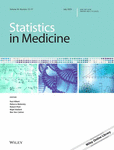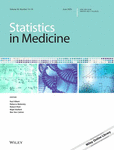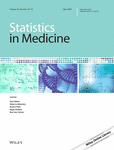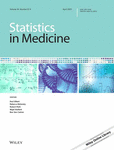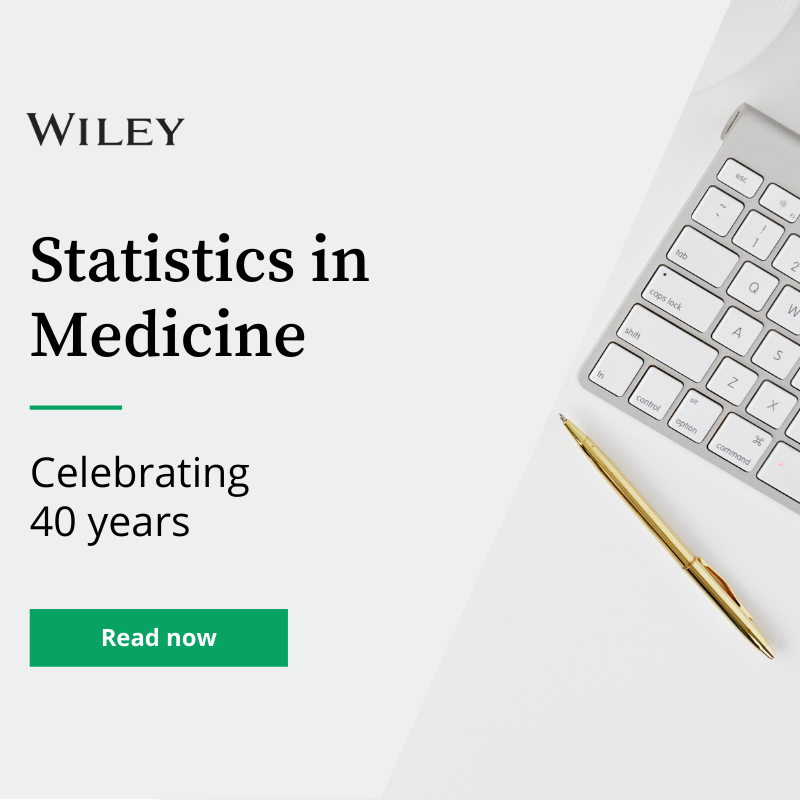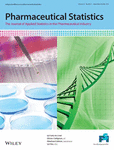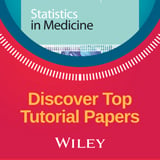EDITORS: Paul Albert, Rebecca Betensky, Robert Platt, Nigel Stallard and Ben Van Calster
Statistics in Medicine journal enhances communication between statisticians, clinicians and medical researchers, influencing and improving practice in medicine and its associated sciences.
We publish research papers that apply statistical and quantitative methods to medical problems, and clearly explain the implications of the results. We welcome submissions that explain new methods or use existing methods creatively, demonstrated with substantive, real, motivating examples.
Journal Metrics
- 3.7CiteScore
- 1.8Journal Impact Factor
- 27%Acceptance rate
- 50 days Submission to first decision
Statistics in Medicine Welcomes New Editor-in-Chief

Statistics in Medicine is pleased to welcome Rebecca Betensky as a new member of our editorial team. Dr. Betensky joins Robert Platt, Nigel Stallard, Ben Van Calster and Paul Albert (Tutorials Editor) as an Editor-in-Chief on the journal. Dr. Betensky replaces Lisa McShane, whose term as an Editor-in-Chief ended in 2024. Wiley and the entire Statistics in Medicine editorial team would like to thank Lisa for her service, leadership and dedication to the journal.
Dr. Betensky is Professor of Biostatistics and Chair of the Biostatistics Department at the New York University School of Global Public Health. Prior to joining NYU, she was Professor of Biostatistics at the Harvard T. H. Chan School of Public Health and Biostatistician at Massachusetts General Hospital. Her research focuses on methods for survival data, design of clinical trials, biomarker discovery, and multiple testing. Much of her work is motivated by problems that arise in her collaborations in Alzheimer’s disease, multiple sclerosis, and multiple system atrophy. Dr. Betensky is the statistical editor of Annals of Neurology and a statistical reviewer for New England Journal of Medicine Evidence.
Statistics in Medicine Welcomes New Tutorials Editor

Statistics in Medicine is pleased to welcome Paul Albert as the newest member of our editorial team. Dr Albert joins Robert Platt, and Nigel Stallard and Ben Van Calster as the Tutorials Editor on the journal.
Dr Albert has 35 years of experience at the National Institutes of Health holding scientific and leadership positions at different institutes. He currently is Director and Senior Investigator of the Biostatistics Branch in the Division of Cancer Epidemiology and Genetics at the National Cancer Institute. In this capacity, he leads a research group with 12 principal investigators and between 15-20 post-doctoral, pre-doctoral, and post-bac fellows. His personal research focuses on methods development for biomarker and longitudinal studies and their application to cancer epidemiology. He leads work on the development and application of hidden Markov models in cancer epidemiology and genetics, and on the development of novel methodology for analyzing chemical mixture data and its application to population-based cancer studies. He continues to have an active research agenda in the use of group-testing methodology with applications to clinical medicine and epidemiological research. Dr Albert has been an associate editor for major journals in biostatistics including Statistics in Medicine, Biometrics, and Statistics in the Biosciences. Until recently, he was co-section editor for biometrical methodology in the New England Journal of Statistics in the Data Sciences. He serves as a statistical editor of the American Journal of Obstetrics and Gynecology.
Statistics in Medicine Welcomes New Editor-in-Chief

Statistics in Medicine is pleased to welcome Ben Van Calster as a new member of our editorial team. Dr Van Calster joins Robert Platt, and Nigel Stallard as an Editor-in-Chief on the journal. Dr Van Calster replaces Els Goetghebeur who retired as an Editor-in-Chief in 2022. Wiley and the entire Statistics in Medicine editorial team would like to thank Els for her service, leadership and dedication to the journal.
Ben Van Calster, PhD, is Associate Professor at KU Leuven (Department of Development and Regeneration) and Leiden University Medical Center (Department of Biomedical Data Sciences). He is also the statistician of the Research Ethics Committee of the University Hospitals KU Leuven. He obtained an MA in Psychology, MSc in Statistics, and PhD in Engineering (Biomedical Data Processing), all from KU Leuven. He was visiting professor at the Erasmus Medical Center in Rotterdam and at Boston University. Dr. Van Calster serves on the Editorial Board of Medical Decision Making, and is Associate Editor of Diagnostic and Prognostic Research. He is a member of the STRATOS initiative, where he is co-chair of the Topic Group on ‘Evaluating Diagnostic Tests and Prediction Models’.
His statistical research deals with methods to develop and validate prediction models based on regression and machine learning algorithms, with focus on calibration, decision curve analysis, and multinomial outcomes. On the applied side, he develops and validates prediction models to diagnose ovarian malignancy, ectopic pregnancy, and other gynecological outcomes. He is the statistician of the International Ovarian Tumor Analysis (IOTA) consortium (www.iotagroup.org), and developer of the ADNEX and M6 models. He also works on research quality and reporting.
Statistics in Medicine 40th Anniversary Celebrations
2021 marked the 40th anniversary of Statistics in Medicine! Celebrations began with issue 40:1, where we were pleased to reprint the 1962 Alfred Watson Memorial Lecture delivered by Sir Austin Bradford Hill, The Statistician in Medicine, alongside invited discussions from a number of distinguished colleagues, reflecting on Hill’s perspective on the role of the statistician in medicine and how it aligns with their own experiences today. Throughout the 40th anniversary year we have continued to explore with our readers developments in the current practice of the biostatistical sciences. We have published invited papers, featured articles, and tutorials, as well as the usual author-initiated submissions on clinical trials, observational studies, epidemiology, real world evidence, genetics, and statistical methodology for new and established data types. Our 40th anniversary virtual issue combines some of the featured articles and commentaries published throughout the year.
Articles
A General Linear Mixed Effect Model to Infer Biomarker Correlations by Bridging Retrospectively Measured Data Across Multiple Studies
- 21 July 2025
Neural Network-Based Dynamic Prediction for Interval-Censored Data With Time-Varying Covariates: Application to Alzheimer's Disease
- 18 July 2025
Exposure Measurement Error Correction in Longitudinal Studies With Discrete Outcomes
- 18 July 2025
Model Validation for Survival Analysis by Smoothed Predictive Likelihood
- 18 July 2025
The following is a list of the most cited articles based on citations published in the last three years, according to CrossRef.
Quantifying heterogeneity in a meta‐analysis
- 1539-1558
- 21 May 2002
Multiple imputation using chained equations: Issues and guidance for practice
- 377-399
- 30 November 2010
Balance diagnostics for comparing the distribution of baseline covariates between treatment groups in propensity‐score matched samples
- 3083-3107
- 13 October 2009
Mendelian randomization: Using genes as instruments for making causal inferences in epidemiology
- 1133-1163
- 26 February 2008
Recent issues
- Volume 44, Issue 15-17July 2025
- Volume 44, Issue 13-14June 2025
- Volume 44, Issue 10-12May 2025
- Volume 44, Issue 8-9April 2025



